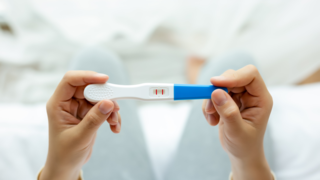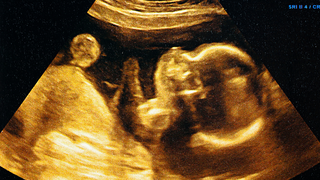In this article:
What Natural Conception Involves
Natural conception happens inside the female reproductive tract without medical intervention.- The biological process: Each month, during ovulation, an egg is released from the ovary. If sperm enters the fallopian tube within the fertile window, fertilisation may occur. The resulting embryo then travels to the uterus for implantation.
- Chances per cycle: In healthy couples under 35, the chance of conceiving naturally each month is about 20–25%. Over the course of one year, around 80–85% of couples will conceive naturally.
- Influences on success: Age, lifestyle, timing of intercourse, and underlying reproductive conditions all affect the likelihood.
What the IVF Process Involves
In vitro fertilisation (IVF) is one of the most widely used assisted reproductive technologies. It bypasses some of the barriers to natural conception by moving fertilisation into a controlled laboratory setting.- Ovarian stimulation: Hormonal medications are used to encourage the ovaries to produce multiple eggs.
- Egg retrieval: Eggs are collected through a minor surgical procedure.
- Fertilisation in the lab: Eggs are combined with sperm, either through conventional IVF or intracytoplasmic sperm injection (ICSI).
- Embryo culture: Fertilised eggs are grown for a few days until they reach the blastocyst stage.
- Embryo transfer: One or more embryos are placed in the uterus, where implantation may occur.
- Blocked or damaged fallopian tubes
- Severe male factor infertility
- Low ovarian reserve
- Endometriosis
- Unexplained infertility
- Advanced maternal age
IVF vs Natural Conception: Key Differences
A side-by-side look helps clarify what makes each pathway unique.Biological setting
- Natural: Fertilisation occurs in the body.
- IVF: Fertilisation occurs in a lab.
- Natural: Around 20–25% chance per cycle if healthy and under 35.
- IVF: Controlled but age-dependent, around 40% under 35, lower beyond 40.
- Natural: Minimal, unless complications arise.
- IVF: Multiple clinic visits, scans, procedures, and injections.
- Natural: Risks occur mainly during pregnancy.
- IVF: Risks include ovarian hyperstimulation syndrome (OHSS), multiple pregnancies, and procedure-related discomfort.
- Natural: No direct medical cost.
- IVF: ₹1.5–2.5 lakhs per cycle in India, often requiring repeat attempts.
- Natural: Less medical pressure, but can be stressful if conception is delayed.
- IVF: Intense emotional and physical demands, but also offers hope when natural methods fail.
When to Consider Moving Beyond Natural Conception
Doctors often suggest an evaluation if pregnancy has not occurred after:- 12 months of regular, unprotected intercourse (if the woman is under 35).
- 6 months if the woman is over 35.
In India, couples often delay seeking medical help due to stigma or family advice to “just wait.” Unfortunately, waiting too long, especially after 35, reduces both natural and IVF success rates.
Factors That Influence the Choice in India
The decision between trying naturally and opting for IVF is rarely just medical.- Cultural pressure: Couples often face pressure from extended families to conceive quickly, leading to stress and earlier consideration of IVF.
- Financial readiness: IVF is costly, and many couples need to budget or borrow. Some clinics offer EMI plans, but affordability remains a barrier.
- Access to clinics: IVF centres are concentrated in metro cities. Couples from smaller towns may need to travel, adding logistical challenges.
- Emotional resilience: IVF requires multiple procedures and can involve disappointment if cycles fail, so readiness for this journey matters.
Medical Conditions That May Require IVF
Some health factors make IVF more advisable than waiting longer for natural conception:- Polycystic ovary syndrome (PCOS): Can disrupt ovulation, making natural conception irregular.
- Endometriosis: May affect both egg quality and implantation.
- Low ovarian reserve: Declining egg supply reduces the chances of natural conception.
- Blocked fallopian tubes: Prevents egg and sperm from meeting naturally.
- Severe male infertility: Low sperm count or poor motility may require ICSI with IVF.
Emotional and Practical Support
Both natural conception and IVF involve waiting, uncertainty, and emotional highs and lows.- Coping with uncertainty: Even healthy couples can take several months to conceive naturally. Knowing this is normal can ease anxiety.
- Managing IVF stress: Counselling, mindfulness, or support groups can help. In India, IVF support communities are growing both online and offline.
- Partner communication: Fertility struggles can strain relationships. Sharing feelings openly helps prevent isolation.
- Financial planning: IVF costs add up quickly; planning ahead reduces stress.
Whether you’re trying to conceive or navigating IVF, you’re not alone. Join our supportive communities to connect, share, and find strength with others on the same journey.
FAQs on IVF vs Natural Conception: Key Differences Explained
- Is IVF always more successful than natural conception?
No. In couples without fertility issues, natural conception has higher monthly chances. IVF is more helpful when infertility factors exist. - Does IVF increase pregnancy risks?
IVF babies are generally healthy, but there is a slightly higher risk of preterm birth and low birth weight. - How many IVF cycles are usually needed?
Some women conceive in the first cycle, but many require 2–3 attempts. Success depends on age and underlying health. - Can lifestyle changes improve natural conception?
Yes. A healthy diet, exercise, weight management, and avoiding smoking or alcohol improve fertility in both partners.











